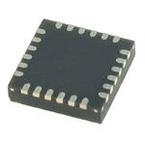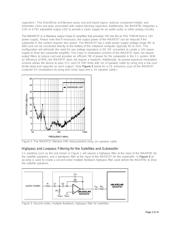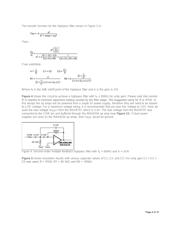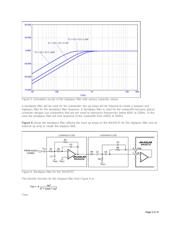
Attend this brief webcast by Maxim on
TechOnline
Maxim > Design Support > Technical Documents > Application Notes > Audio Circuits > APP 4046
Keywords: audio, amplifier, audio amplifier, stereo, stereo class d, mono, mono class d, high efficiency, class
d, PWM, spread spectrum, EMI, low EMI, notebook audio, 2.1 subsystem, mircosoft vista audio, vista audio,
vista
APPLICATION NOTE 4046
Overview of 2.1 (Satellite/Subwoofer) Speaker
Systems
Sep 25, 2009
Abstract:
This application
note provides an overview of conventional 2.1 audio designs for portable computers,
and it considers the ways in which they address the unequal output power requirements of satellite speakers
and the subwoofer. The article then details Maxim's highly efficient, low-cost 2.1 solution, which provides 2 x
2W and 1 x 7W of output power.
Introduction
Audio designers for portable computers are constantly working on
improvements to the sound of the system. In space-constrained designs,
one of the better solutions is a 2.1 configuration, which uses stereo
satellites for mid and high frequencies (typically 500Hz and above in
portable computer systems) and a single subwoofer for low frequencies
(typically 500Hz and below in portable computer systems).
This application note presents a highly efficient, low-cost 2.1 solution,
which provides 2 x 2W and 1 x 7W of output power. We introduce the MAX9737 Class D amplifier which has
a wide power-supply range (8V to 28V) and eliminates the need for any voltage regulators.
Overview of Conventional Solutions
One of the main problems faced by audio system designers has been the unequal output power requirements
of the satellite speakers and subwoofer. Typically, the subwoofer requires four to five times more output
power for proper sound balance. With only a 5V power supply available, a variety of audio power-amplifier
solutions have been employed, each of which has its own disadvantages.
1. The most common solution has been to use two stereo power amplifiers of the same output power level.
One of the amplifiers drives the satellites, and the other drives the subwoofer. The satellites use 8Ω
speakers, while the subwoofer uses 4Ω speakers. This results in a 2.1 solution with 2 x 1W satellites
and a 1 x 2W subwoofer. Although this solution is simple, it does not provide enough power to the
subwoofer to produce a substantial amount of bass. Also, using 8Ω speakers for the satellites does not
maximize the satellites' sound pressure level (SPL). Consequently, the overall sound level of this
approach is limited.
2. By changing the speaker impedances of the above solution, one can use 4Ω speakers for the satellites
and 2Ω speakers for the subwoofer. This creates a 2.1 solution with 2 x 2W for the satellites and 1 x 4W
for the subwoofer. This solution increases the sound level by doubling the output power; however,
sourcing 2Ω speakers and power amplifiers to drive these speakers is difficult and costly. In addition, the
Page 1 of 10








